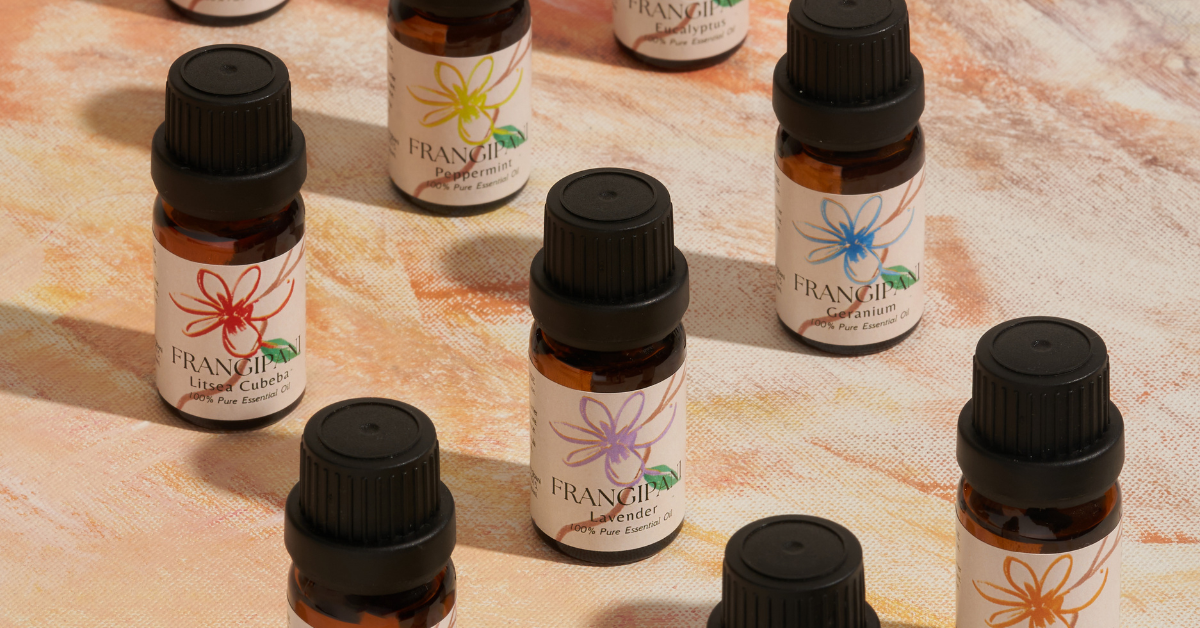Essential Oil Perfume Blends: Crafting Natural Fragrances at Home
Creating your own essential oil perfume blends is a rewarding journey into the world of natural fragrances. This guide will walk you through the process of crafting unique scents using pure essential oils, allowing you to express your creativity and enjoy chemical-free, personalized perfumes.
Understanding Perfume Notes
The art of perfumery relies on understanding the concept of fragrance notes:
Top Notes: Light, fresh scents that evaporate quickly (e.g., citrus oils, spearmint)
Middle Notes: The heart of the perfume, emerging as top notes fade (e.g., floral and herbal oils)
Base Notes: Deep, long-lasting aromas that anchor the blend (e.g., woody oils, resins)
A balanced perfume typically follows the 30/50/20 rule: 30% top notes, 50% middle notes, and 20% base notes. This guideline is similar to those used in other blending techniques, such as those found in Nikura’s DIY Guide.
The science behind aromatherapy is fascinating. The connection between smell and memory is well-documented, as the olfactory lobe is part of the limbic system, which manages emotions and long-term memories. For more on this topic, visit American College of Healthcare Sciences.
Essential Supplies
To create your own perfume blends, you'll need:
Glass roller bottles or spray bottles (10ml is ideal)
A carrier oil (e.g., fractionated coconut oil, sweet almond oil)
Essential oils of your choice
Pipettes for precise measuring
When sourcing essential oils, quality is paramount. Companies like The Perfumery emphasize the importance of using high-quality, unadulterated oils for the best results.
Step-by-Step Blending Process
Choose your essential oils based on desired scent profile and benefits.
Add essential oils to your bottle, starting with base notes, then middle notes, and finally top notes.
Fill the remainder of the bottle with your chosen carrier oil.
Seal the bottle and gently shake to blend the oils.
Allow the blend to mature for a few days to let the scents harmonize.
Perfume Blend Recipes
Here are some inspiring blends to try:
Citrus Uplift Blend
Top Notes: 10 drops grapefruit, 6 drops bergamot
Middle Note: 8 drops lavender
Base Note: 4 drops cedarwood
Zen Morning Blend
Top Note: 10 drops litsea cubeba
Middle Note: 8 drops hinoki cypress
Base Note: 4 drops vetiver
Floral Elegance Blend
Top Note: 8 drops yuzu
Middle Note: 10 drops jasmine sambac
Base Notes: 6 drops sandalwood, 2 drops frangipani
For more ideas on blending essential oils, consider exploring resources like Mockingbird Apothecary, which offer insights into popular combinations.
Tips for Successful Blending
Start with small quantities and adjust as needed.
Keep a journal of your blends to track successful combinations.
Consider the therapeutic properties of oils alongside their scents.
Test your blend on a fragrance strip before applying to skin.
Seasonal Blending
Adapt your perfumes to the changing seasons:
Spring/Summer: Light, fresh scents (e.g., citrus, light florals)
Fall/Winter: Warm, spicy aromas (e.g., cinnamon, sandalwood)
Common Mistakes to Avoid
Overusing strong oils like patchouli or ylang-ylang
Skipping patch tests before applying new blends to skin
Storing oils improperly (keep in cool, dark places)
Benefits of Natural Perfumes
Essential oil perfume blends offer several advantages over synthetic fragrances:
Free from harsh chemicals and potential allergens
Customizable to personal preferences and needs
Potential aromatherapy benefits
Environmentally friendly and sustainable
Testing and Adjusting Your Blend
After creating your blend, it's important to test and refine:
Apply a small amount to your wrist or a fragrance strip.
Observe how the scent evolves over time.
Make note of which notes dominate and how long the fragrance lasts.
Adjust the ratios of oils if needed to achieve your desired scent profile.
Application Methods
There are several ways to enjoy your essential oil perfume blends:
Roll-on application to pulse points
Spray bottle for a lighter, all-over mist
Add to unscented lotion for a subtler fragrance
Use in a diffuser for aromatherapy benefits
A Personal Touch from FRANGIPANI
At FRANGIPANI, we believe in the power of scent to evoke memories and emotions. The rich aromatic heritage is reflected in our carefully curated collection of essential oils, including rare botanicals like Litsea Cubeba and Hinoki. Visit FRANGIPANI's About Page to learn more about our story.
Expanding Your Perfume-Making Skills
As you become more comfortable with basic blending, consider exploring:
Layering different blends for complex fragrances
Creating solid perfumes using beeswax
Infusing your blends with dried flowers or herbs
Safety Considerations
While essential oils are natural, they can be potent. Byrdie pointed out that using no more than a 20% concentration of essential oils in your carrier oil when making perfume, just to be on the safe side.
Other safety tips include:
Always dilute essential oils properly
Perform patch tests before applying new blends
Research any contraindications, especially if pregnant or have sensitive skin
Keep oils out of reach of children and pets
Conclusion: Crafting Your Signature Scent
Creating essential oil perfume blends is an art form that allows for endless creativity and personal expression. Whether you're seeking a calming aroma for relaxation or an energizing scent to start your day, the world of natural perfumery offers limitless possibilities.
FRANGIPANI offers a curated selection of pure, GC/MS-tested oils. Explore FRANGIPANI's Shop to discover unique scents like Litsea Cubeba and Hinoki, perfect for creating your own signature blends.
Remember, the journey of perfume-making is as rewarding as the final product. Enjoy the process of experimentation and discovery as you craft fragrances that are uniquely yours.



